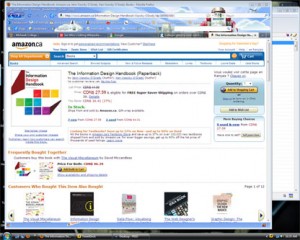So the State of Web Development 2010 is out and a few results are surprising. The one result for the sector one works in was interesting: in 2008 10% of responses indicated they were involved in education, while 7.7% for the 2010 results. Are there less web designing/development going on? Or have those previously been involved in web design now moved over to e-learning?
The Google Chrome browser use has grown over 15% over the year. When developers and designers start using a browser, this usually means the results will filter down to end users. Maybe this is the vanguard of browser change?
Only a third of designers/developers optimize for mobile devices. I interpret that as mobile devices are not a priority to develop for because either they aren’t seen as “mission critical” or that Mobile Safari or Mobile Opera browsers do a good enough job of interpreting website for the mobile platform.
The interesting thing is the early adoption of HTML 5 and CSS3 – which works surprisingly well out of the box on modern browsers. What’s disappointing about this series of results is how far behind LMS developers are from the useful tools in HTML5 (hello, canvas element!) and the usability of CSS3 (it’d be wonderful if we could write a CSS template to apply to learning space areas). I guess it comes down to the closed box system – if you’re paying for a closed box you shouldn’t be surprised when they close the lid too. I think the first LMS that jumps on the HTML 5 bandwagon will be a big winner – the canvas element alone will allow for easier ways to be creative and new ways to work on the web. Canvas Demos is a site that’s showcasing different uses of the canvas element – a lot of games are being drawn on the canvas it seems – but I’m sure you can see the ways that you could use this as a new method of getting input. Or perhaps, eliminating expensive web conferencing tools and brewing something a little more open source. Can you say interactive whiteboard?
